The brisket primal is composed of the two, hard working pectoral muscles located in the chest area of the steer. It is high in fat and collagen.
We are going to transform it into a lean and tender roast and/or steak.
Procedure:
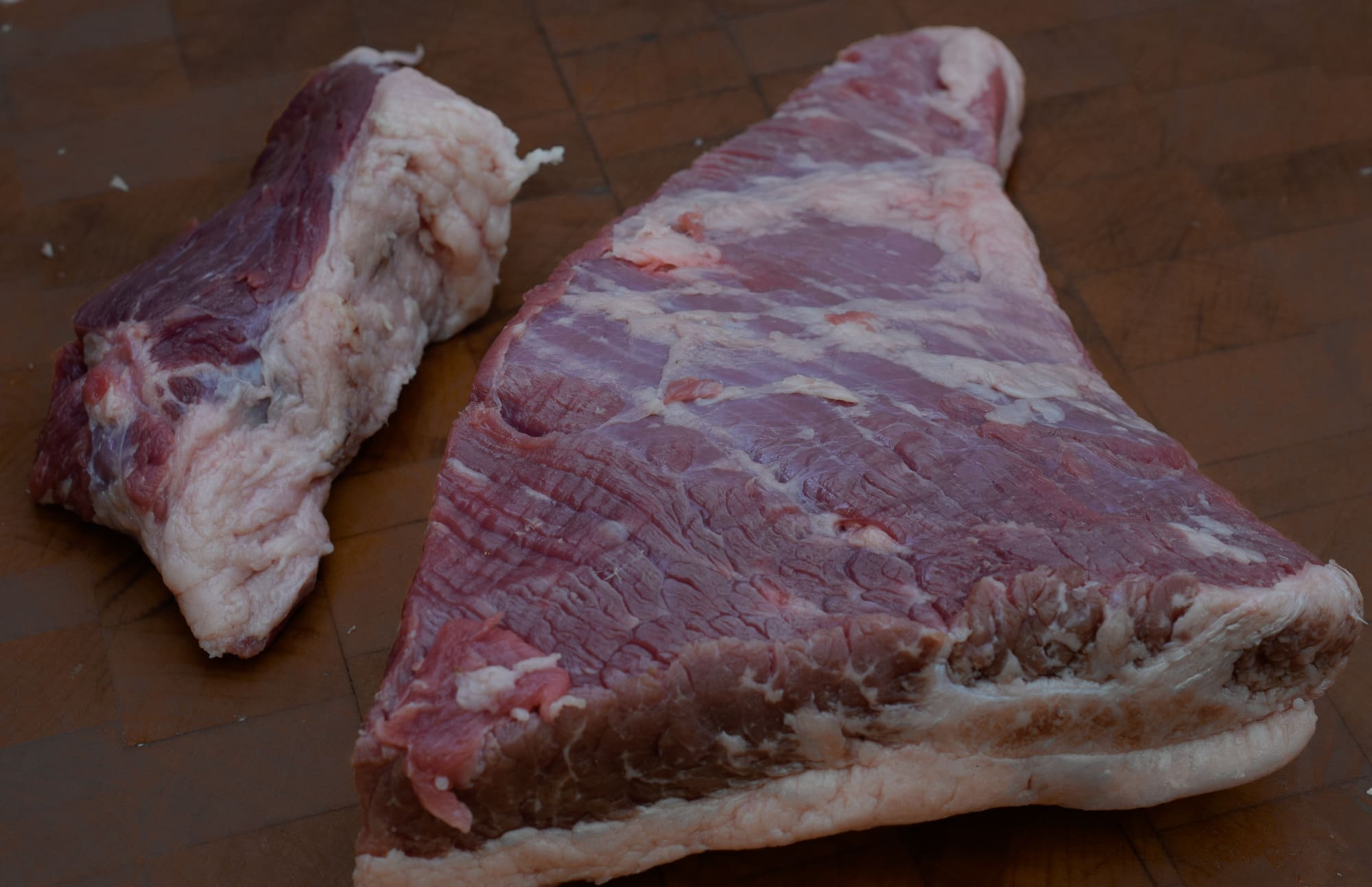
Remove a piece of approximately 24 oz/675 g from the “flat” end (optional). This section is typically very dry and better used for other applications. Remove a piece of approximately 8 oz/225 g from the “point” end (optional). This small rounded piece tends to be difficult to carve because of a high level of intramuscular fat.
Reserve these pieces for ground beef, explained in detail HERE.
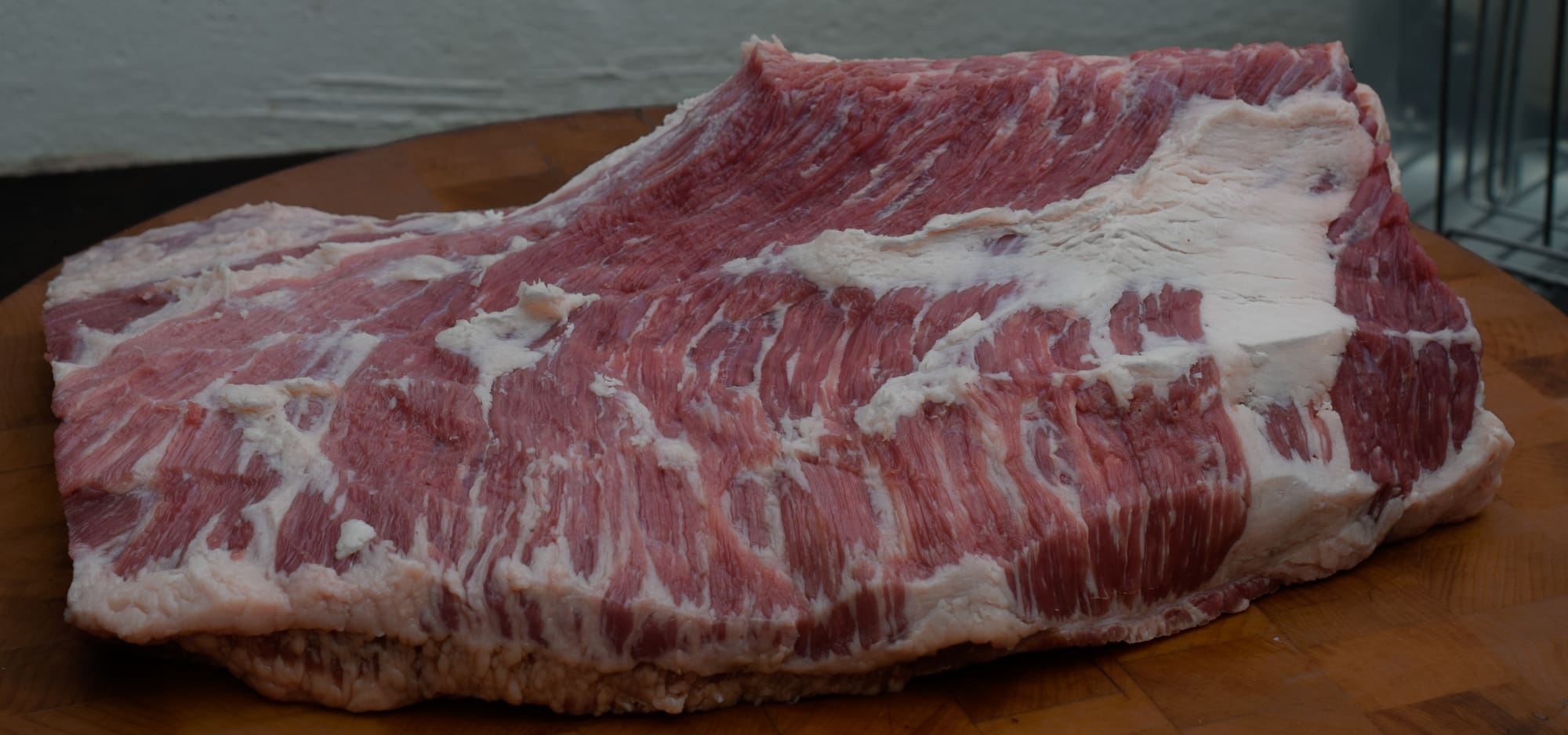
Use a pointed boning knife to remove the fat from the skin side surface of the brisket as shown above. It is better to leave a little bit of fat on the meat than a lot of meat on the fat. With some practice and patience, you will find that trimming the fat is not so difficult. After completing this process, the brisket may weigh as little as half of its original weight. This is to be expected.
Preheat the sous vide bath to
135 F/57 C.
Bigness
Large pieces of meat like this can be difficult to stage into the sous vide pouch. It is perfectly acceptable to reduce the size of the piece of meat–this will not alter the temperature or time parameters of the process. If you have difficulty staging the brisket into the sous vide bag, try spritzing the meat (or the inside of the bag) with spray release/cooking spray/PAM.
While sous vide temperatures give precise results in appearance of doneness, the time parameter cannot be precisely calculated in advance. At this prescribed temperature, you can expect at least a 54 hour interval, and more likely 60. There is no “moment” before which the meat is under cooked or after which it is over cooked. Proteins are oblivious to our system of time measurement. Briskets and other tough cuts become tender after a certain amount of collagen is converted to gelatin, not after an alarm clock rings.
This is why we have the PINCH/POKE method. This hands on method is the same one used by professionals world wide, and requires only a small amount of practice in order to master.
Safe preservation
Once the brisket has achieved the desired level of tenderness, food safety practice dictates that the brisket be either served immediately (usually done with steaks and individual servings of chicken, etc.) or cold shocked in iced tap water until it achieves a temperature no higher than 70 F/21 C. At that time it can be refrigerated at 40 F/4 C. Do not put the hot brisket in the refrigerator–refrigerators are not designed or equipped to chill hot foods. Doing so will result in the brisket spending too long in the temperature danger zone between 40 F/4 C and 125 F/52 C. The hot package will also raise the ambient temperature in the refrigerator to a level high enough to cause other foods in the vicinity to spoil.
The pasteurized brisket can be held refrigerated in this state for at least two weeks. That said, it is now ready for the next step of the process–seasoning and smoking or roasting.
Submerge the package in hot tap water for ten minutes or until the gel in the package completely melts. Cut a hole in the end of the package and drain the juices into a microwaveable container.

Clarification
Bring the juices to a boil to coagulate the solids. Line the colander with a paper towel and place over a large bowl. You can use a spray bottle to moisten the paper towel, or just sprinkle some water over the filter. This prevents the juices from clinging to the fabric instead of draining into the reservoir below.

The filtering process traps the proteins, which are then not surprisingly discarded.

The process yields a concentrated and flavorful consomme–Sous Jus. This is an excellent replacement for the canned and powdered proprietary bouillons, broths and stocks that are sold in the market–without the salt, and with much more gelatin. We will use it to make the sauce for our brisket. It is also very useful in soups and stews. Sous Jus can replace water in ANY recipe, as long as it is UNSALTED. I rarely advocate putting salt in the sous vide bag.
Preparation
Use a fork to beat the egg white well. Lay the the brisket on parchment or a dry surface that is either disposable or easily cleaned.
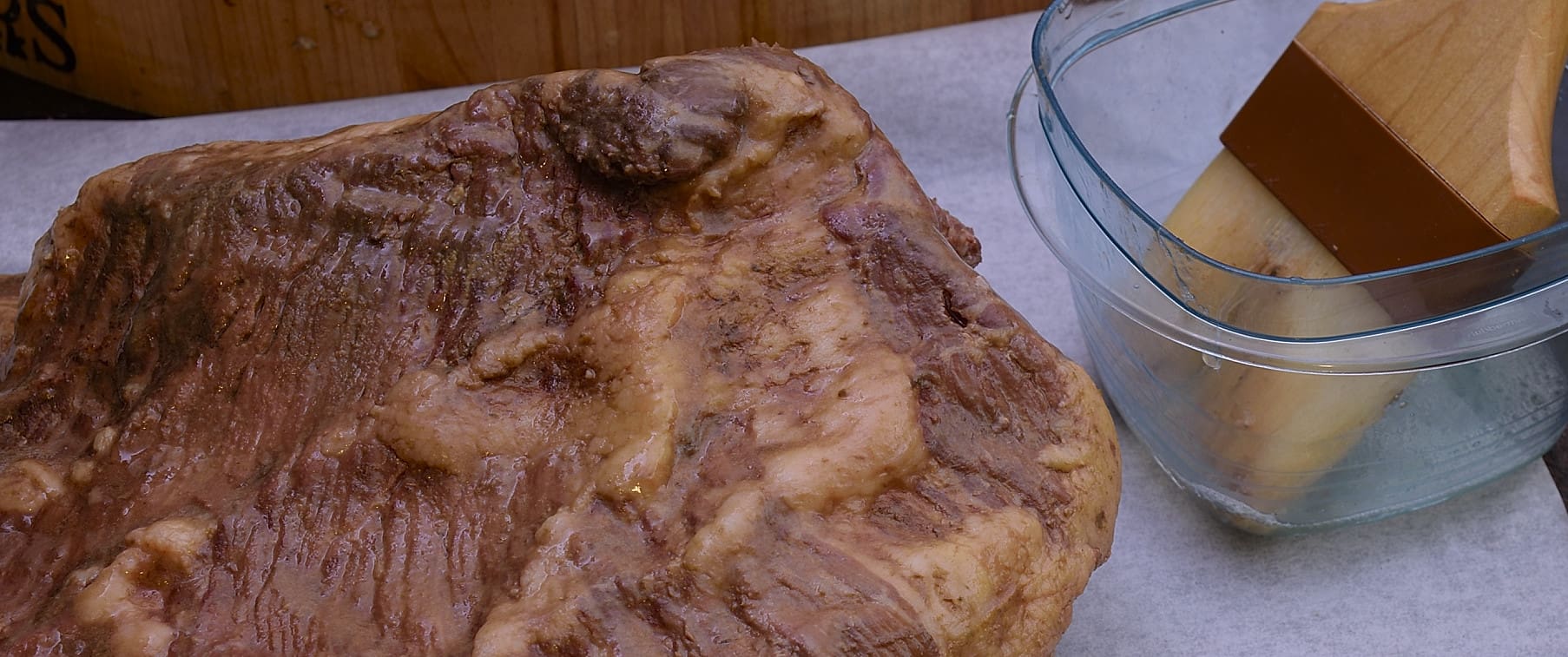
Use a pastry brush to paint the top surface of the brisket.
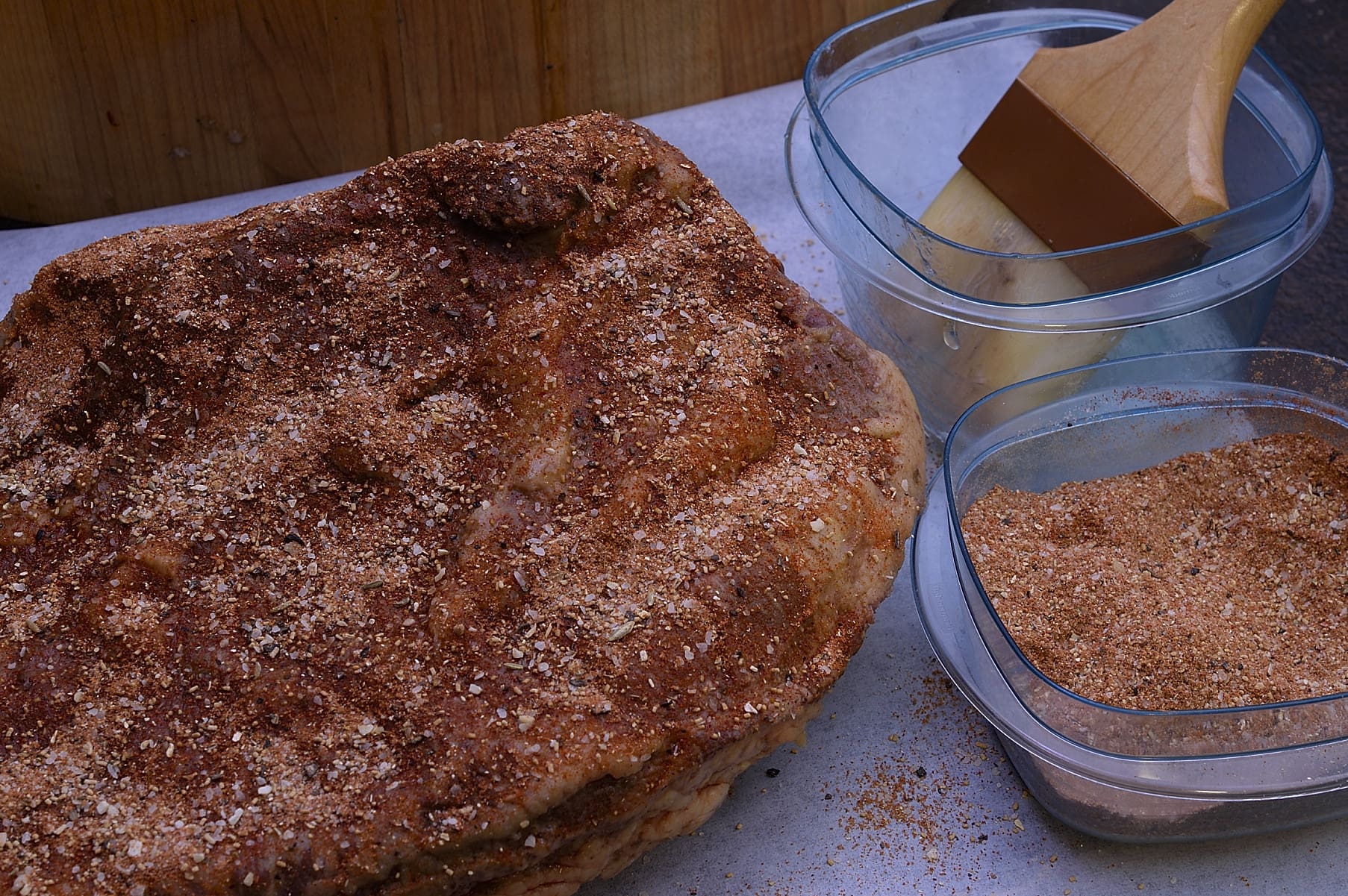
Sprinkle with the seasoning mixture and allow five minutes to cling. Turn the brisket over and repeat the process.
Preheat the smoker to approximately
180 F/82 C.
If you are using a kitchen oven, preheat to
225 F/107 C.
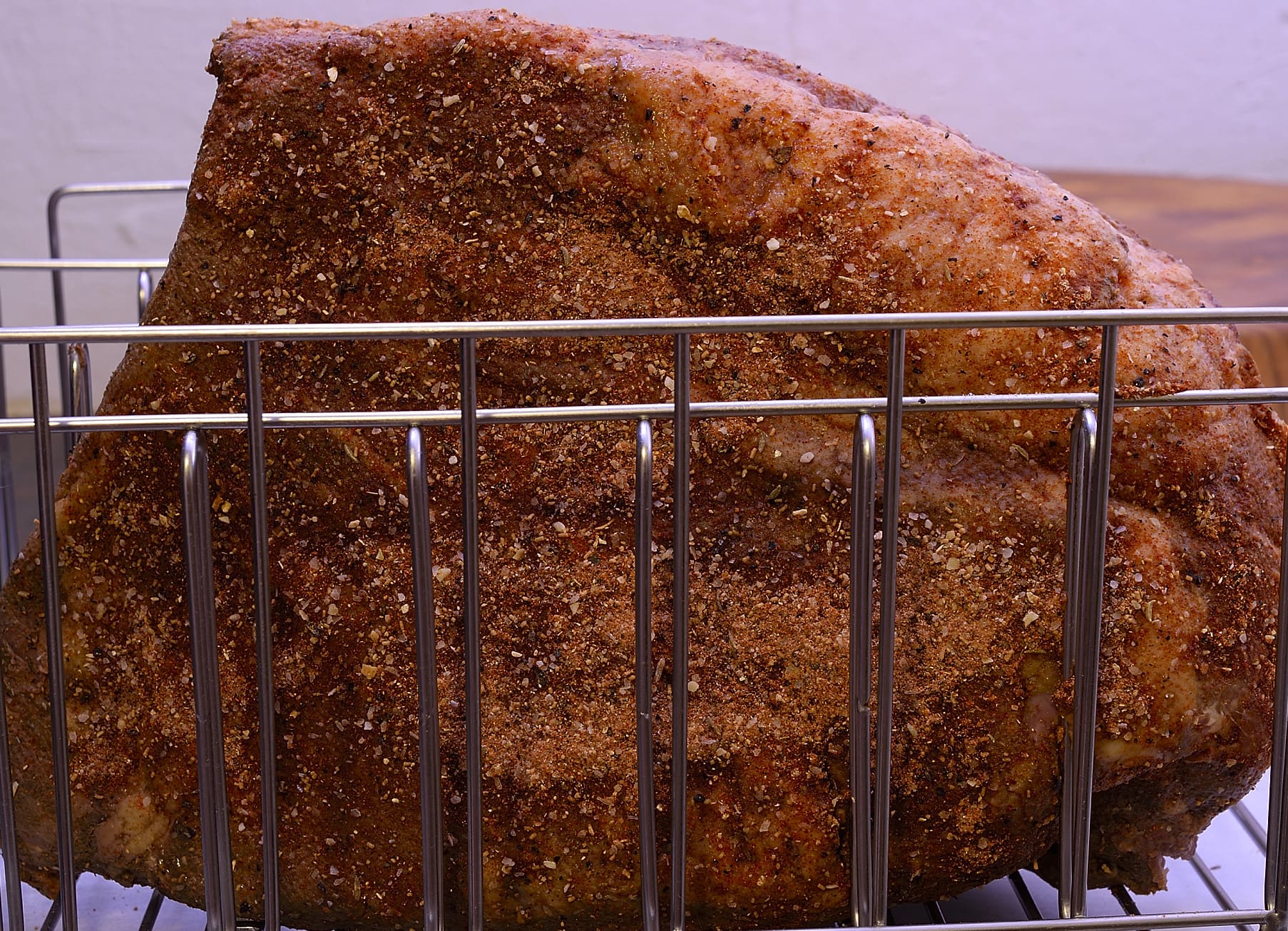
Stand the roast up in a Lipavi rack. If your smoker/oven is not tall enough, the roast can be laid on a lined sheet pan. Smoke/roast for approximately 3 hours. Do not open the smoker/oven for the first two hours–doing so will only cool the chamber unnecessarily and prolong the required process.
Anticipation
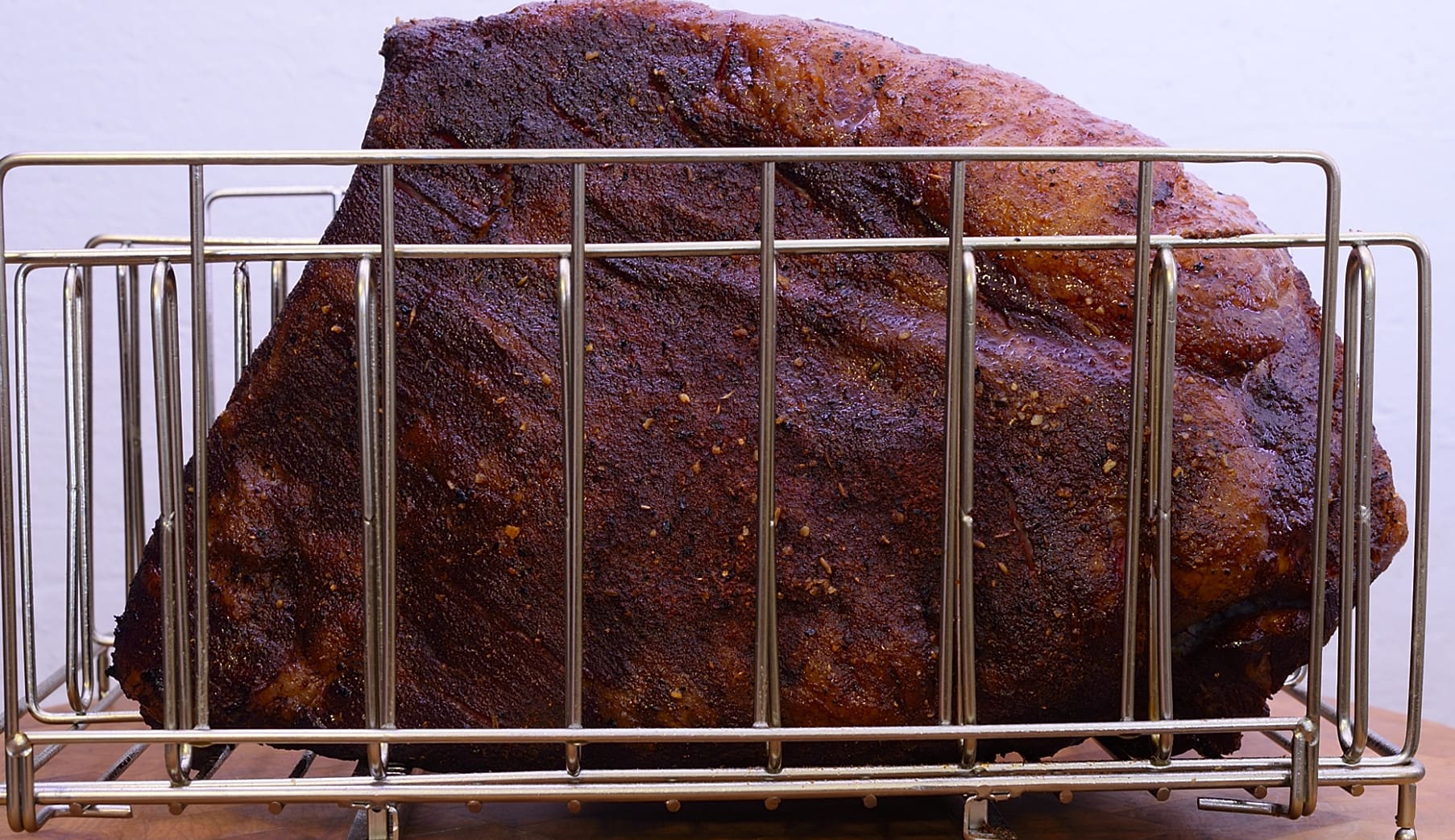
Carving
The grain of the flat runs almost, but not quite perpendicular to the grain of the point. Use the diagram below to insure that your slices come out with the “against the grain” appearance for both sections of the roast.
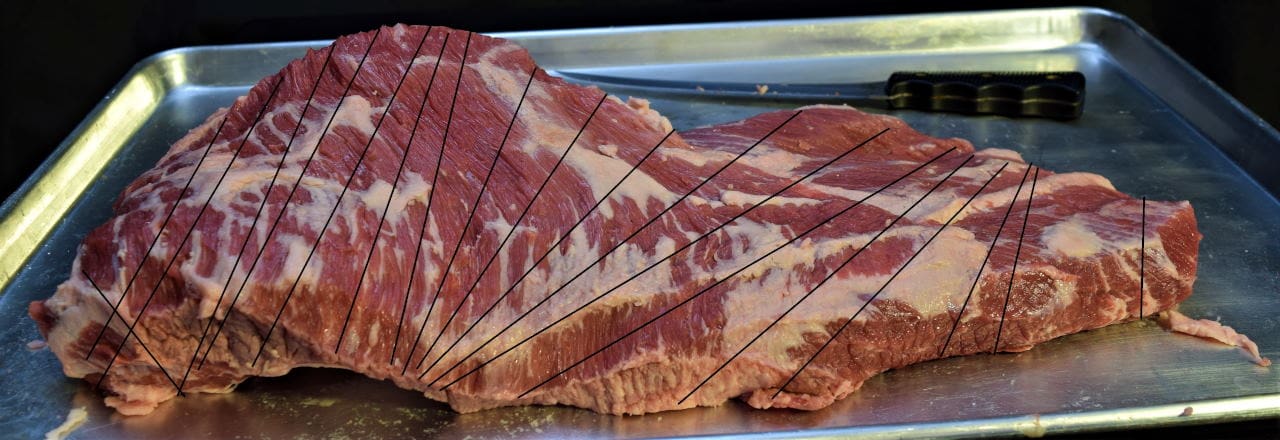
This technique is usually overlooked.
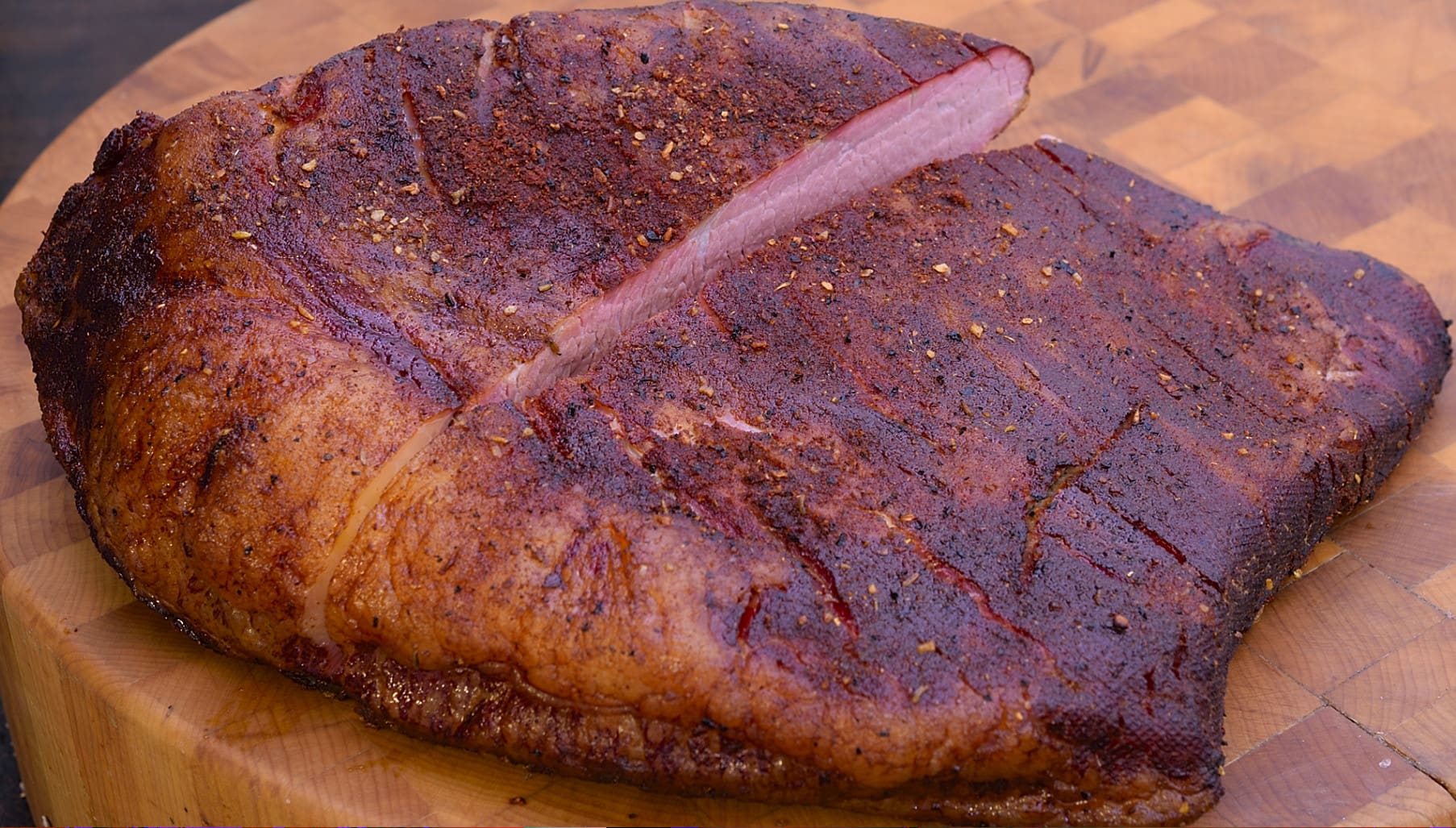
This carving method prevents one piece of the roast (or the other) from being “stringy.”
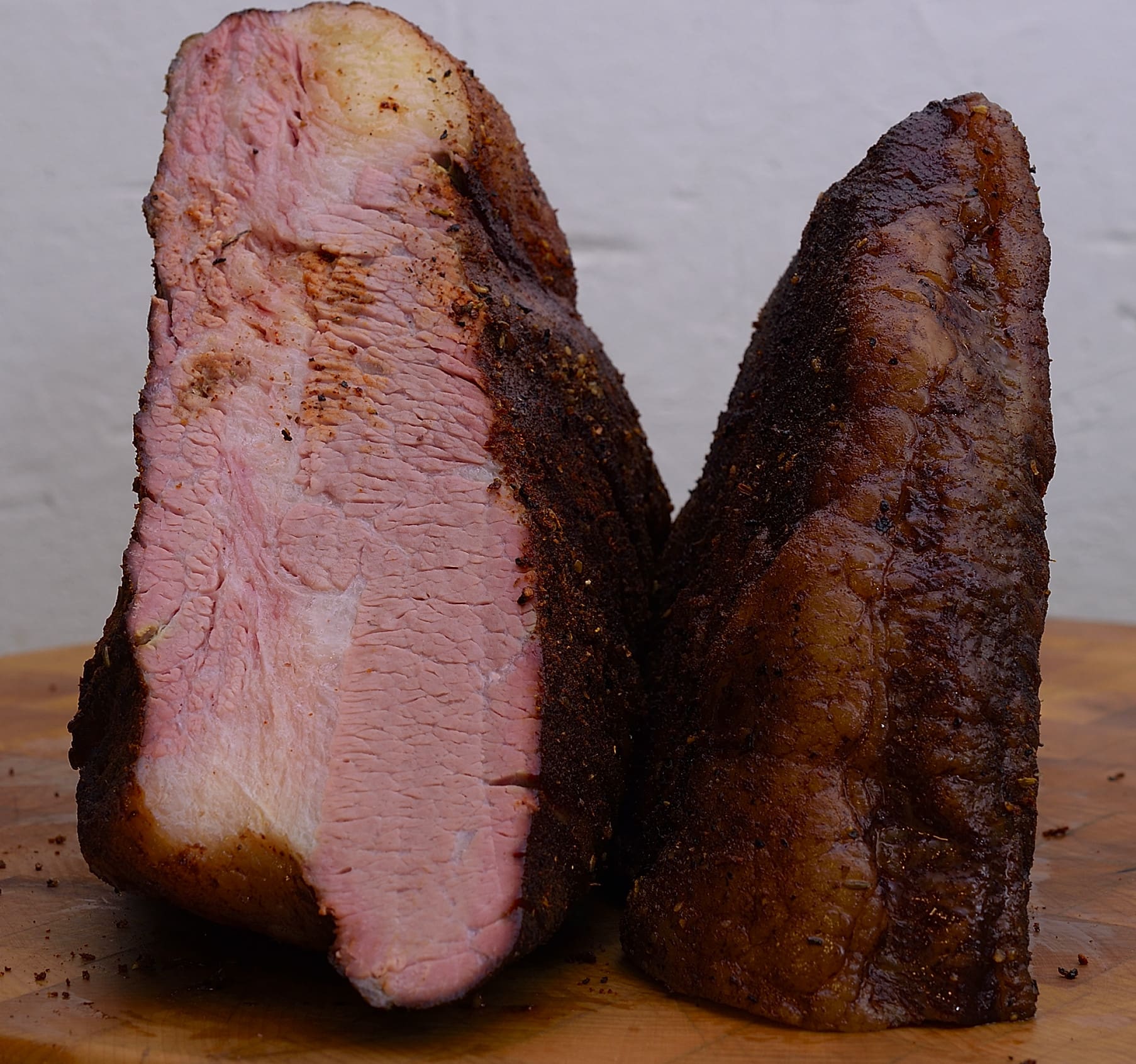
Conventional smoking of brisket requires the achievement of internal temperatures of at least 190 F/88 C to achieve tenderness. Because of sous vide and careful monitoring of the internal temperature curing smoking, the internal temperature of this roast never exceeded 135 F/57 C. The color of the meat need not be “gray,” and may retain a certain amount of fast fading pink.
Is it tender? Pitmasters drape a slice over their index finger to demonstrate the achievement of the correct texture. We used a small metal rack instead.

The sauce:
Combine the Sous Jus, ketchup, Worcestershire, garlic, vinegar, molasses, sugar, and butter in a microwaveable dish or small sauce pan. Heat until the butter melts, but do not allow to boil–approximately 183 F/84 C. Use the stick blender or conventional blender to emulsify. Stage into a squirt bottle (optional).
Presentation
Plated with sauce on the side and a little bit of this and that is more than sufficient:
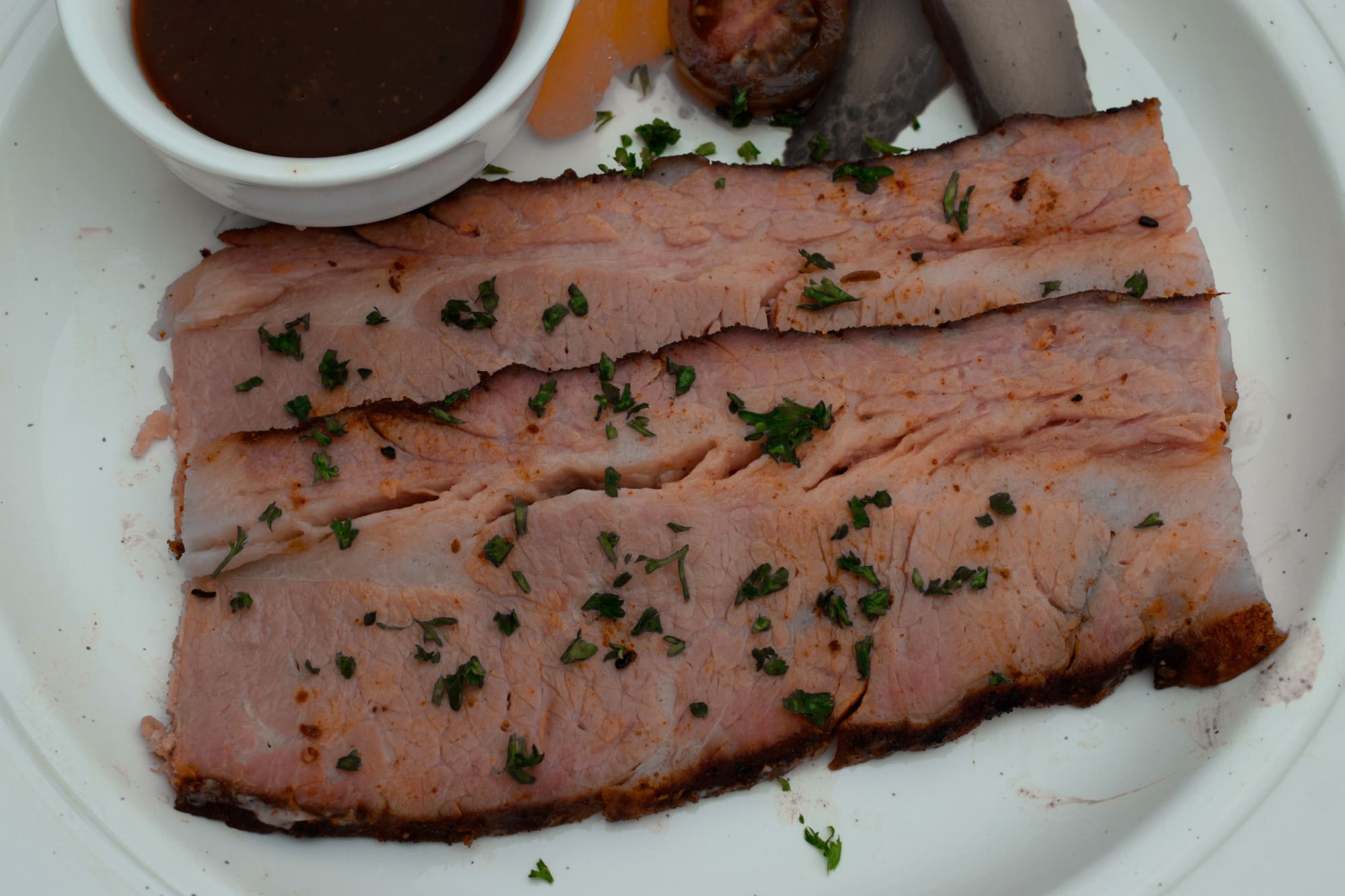
Anti-evaporation
Traditional roasting and smoking depends on evaporation to convert collagen to gelatin. This can cause the meat to be dry. Sous vide not only gives us a tender result, but an especially moist one. So moist, in fact, that it can be cut into steaks and grilled. This adds a lot of WOW factor whether you are entertaining friends or just having a bite in the kitchen after preparing your brisket…
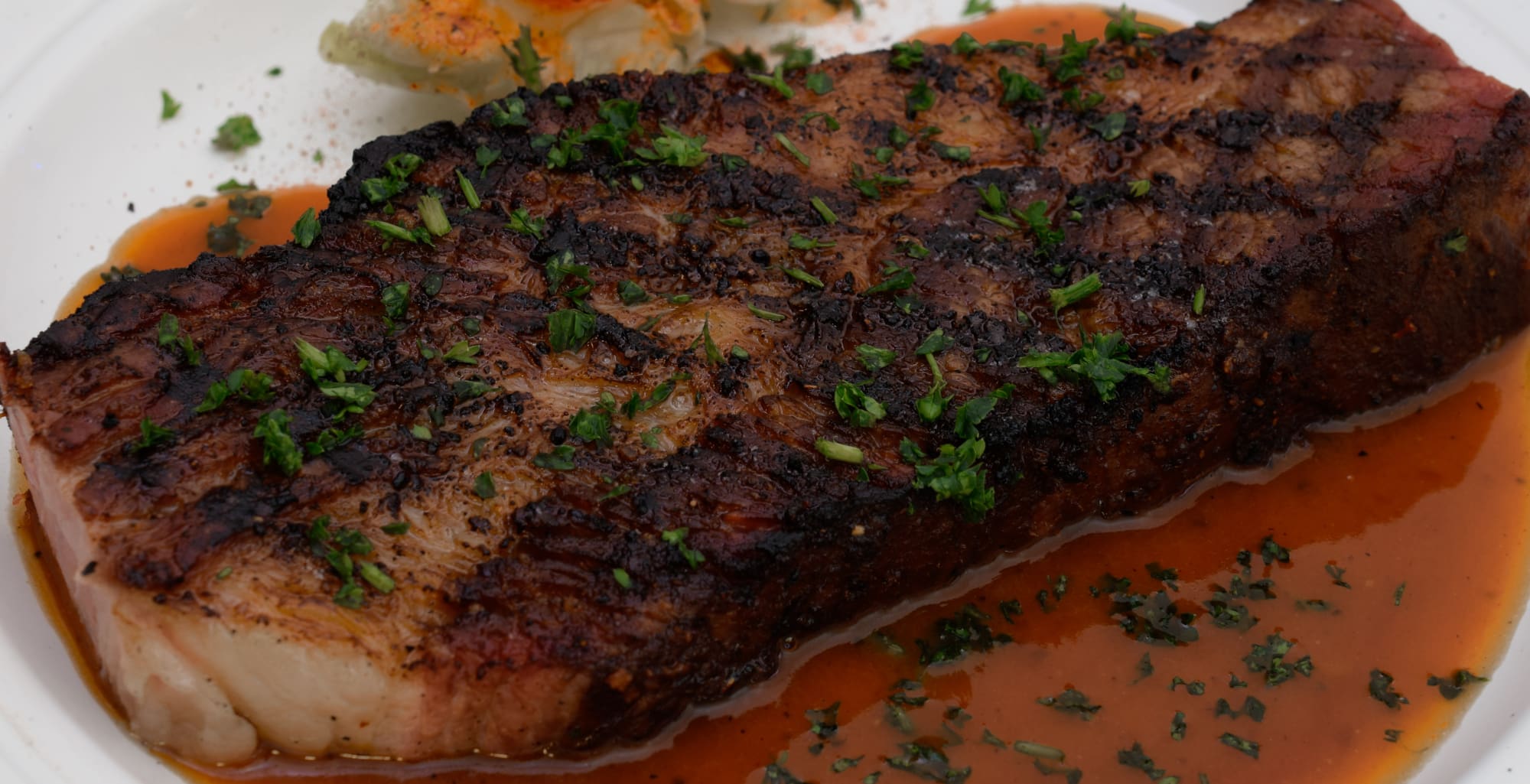
Do not try to do this with a brisket prepared any way other than by sous vide!

No pot roast/Swiss steak ever looked like this.

Distinctly Modernist, yet very very simple.
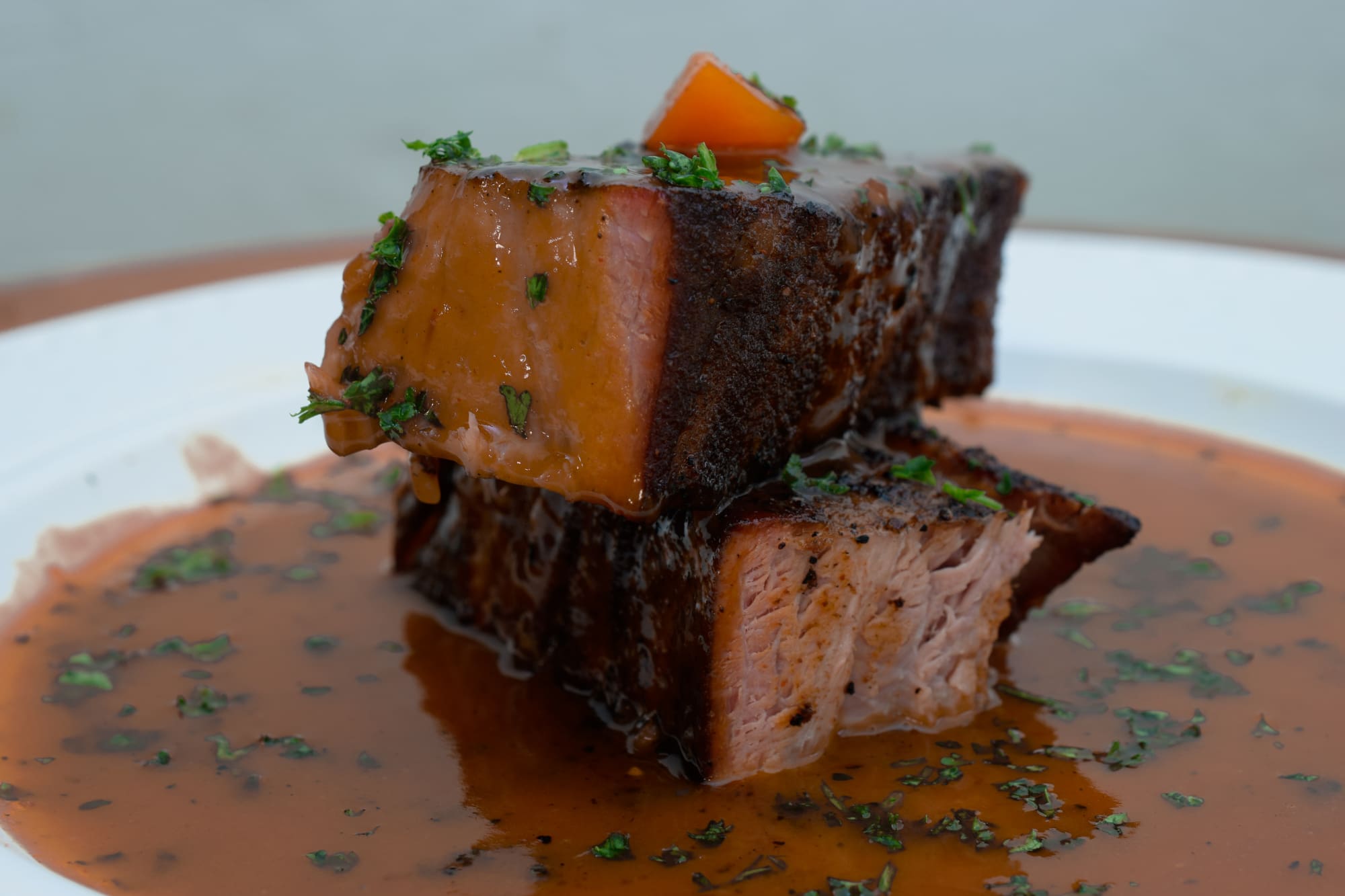
Sincerest Regards!
Norm King

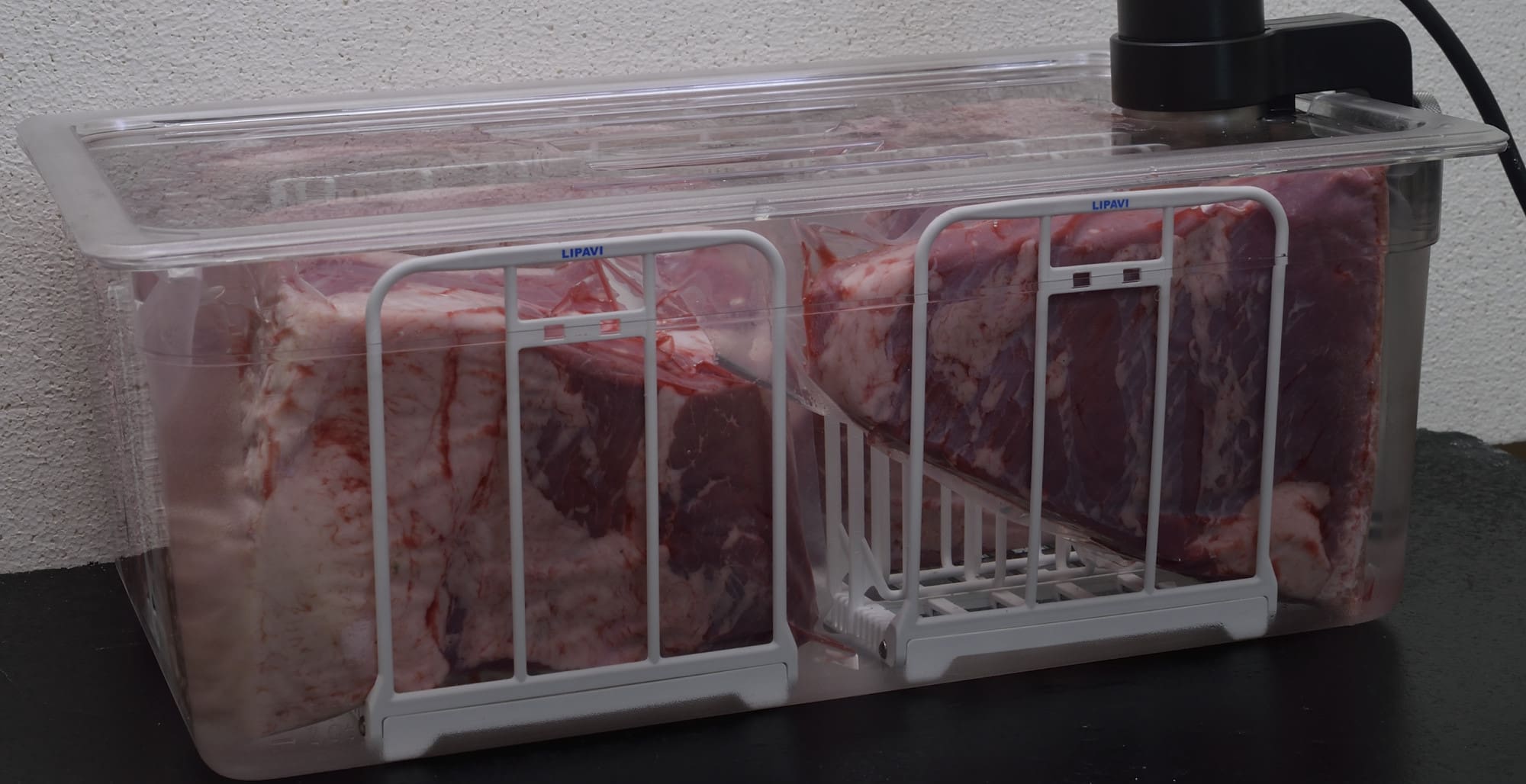

wonderful put up, very informative. I’m wondering why the
opposite experts of this sector do not understand this.
You should continue your writing. I am sure, you’ve a great readers’ base
already!
Feel free to surf to my web-site – vpn special coupon
This text is invaluable. When can I find out more?
My web-site vpn special coupon
Wonderful work! That is the kind of information that are
supposed facebook vs eharmony to find love online
be shared around the web. Disgrace on Google for not positioning this submit upper!
Come on over and discuss with my website . Thanks =)